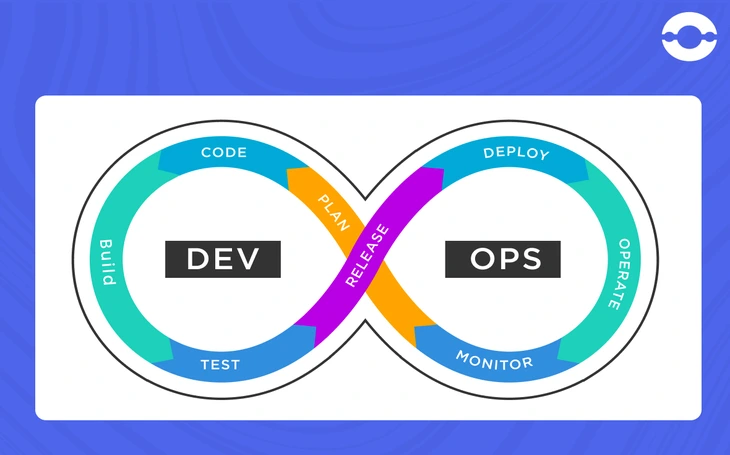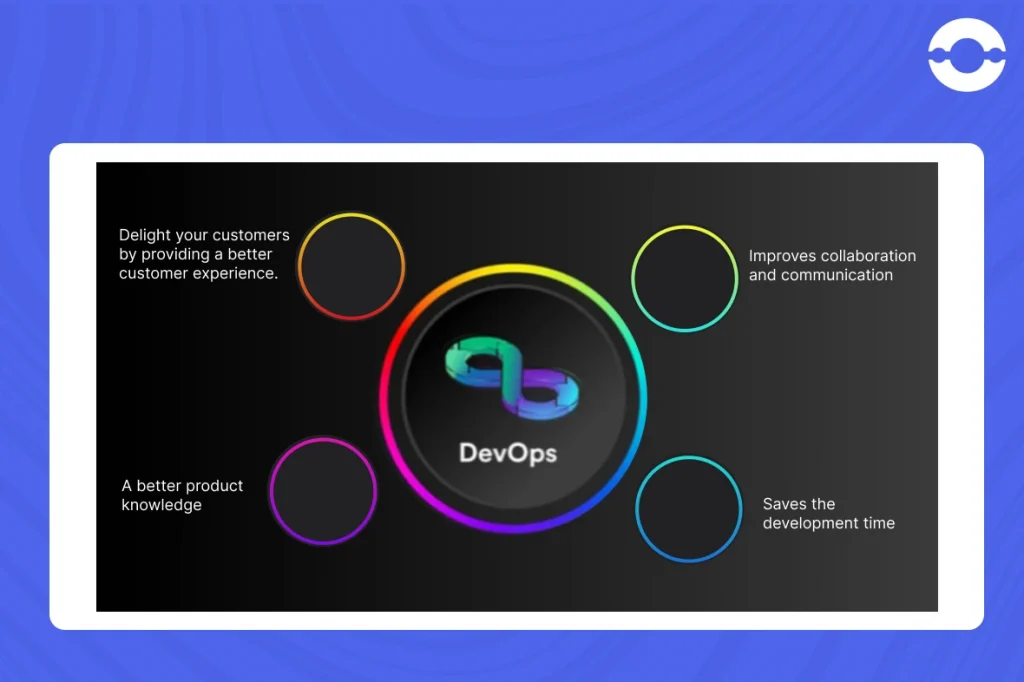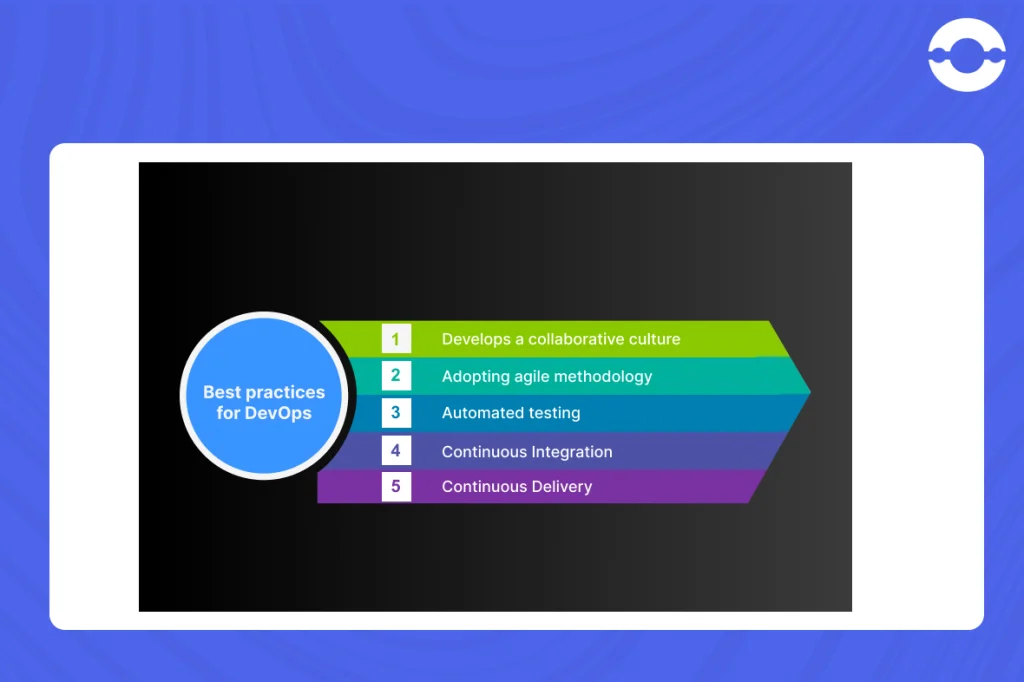
DevOps is not a tool or technology, but it is a practice. DevOps are the practices that unify people, technology, and processes and allow development and operations teams to reach the desired development goal.
It is a software development approach that allows developers to build reliable and high-quality software that too with a faster speed.
DevOps is the intersection of Development and operations. Development and operations are the 2 main components of the application release process.
The concept of DevOps came into existence 15 years ago, and even today, the popularity of DevOps is increasing day by day.
Various companies, including Adobe, Walmart, and Netflix, widely adopt DevOps methodology worldwide.
Traditionally, the Operations and development team work alone. They were not working in a loop, as the development team was involved in writing code, creating designs, and testing features. On the contrary, the operations team handles the configuration side of things.

Both teams are aligned with their respective tasks. The development team doesn’t know what’s going on in the operations department, and on the other hand, the Operations team doesn’t care about what’s happening in the development phase.
Hence, there was no clear communication between either team, leading to product delivery delays.
DevOps practice emphasizes that the development and operations team work closely throughout the software development lifecycle ranging from build to test to release.
Let’s look at statistics, “According to the global insights market research report, the size of the DevOps market touched, $4 billion, and this number is projected to grow by 20% during 2020-2026.
Adopting DevOps practices and methods unifies various departments. DevOps is a combination of 2 words, “Development and operations where the single team manages everything from Development, testing, deployment, and monitoring.
The ultimate objective of DevOps is to deliver high-quality products without a drop in quality. DevOps aims to break down the silos between the development and operations teams by establishing a culture of communication and collaboration.
What Does The Traditional Application Process Look Like?
Whenever we develop an application, we follow the same process of delivering the application to the end users. It does not matter which approach you use, be it waterfall, agile, or any other approach.
You have an idea, and you define the features of an application, write the code, test the application, and deploy it on the server. Now, users can start using it.
Here, the operations team would check whether your application is working smoothly, whether users are experiencing any challenges in using the application, can the application handle high user loads.
The prime objective of the operations team is to ensure that the application is accessible to end users.
Why Is DevOps Needed?
Here are the 3 reasons that highlight the importance of DevOps –
1. Miscommunication between Development and operations
The development team is responsible for writing the code. While The operations team is responsible for running the application. Now there are clashes between developers and the operation team. Developers are coding the app without knowing how the code will be deployed.
The operations team is deploying an app without knowing how the app works. Thus, it results in miscommunication.
For Instance – Developers develop coding, but features cannot be deployed because of many issues. So, the operations team threw it back for improvements. Therefore, projects could be delayed for even months.
2. Conflict of Interest arises.
The development team is responsible for Development, and another team is responsible for operations. The development team wants to push new features to an app, and at the same time, the operations team ensures that those changes will stay intact.
For Instance – Developers want to add a new feature, but these features cost many resources in the production environment where servers get overloaded and crash.
3. Application testing
To test an application, testers are required to perform testing of the app on different devices. After manual testing is performed, a change is released.
Since testing of an app cannot be performed by the development and operations team. , a separate Q/A testing team is required, which may slow down the app development process.
Why Is DevOps Important For Enterprises And Startups?

1. Improves Collaboration And Communication
DevOps improves the collaboration between various departments by bringing Development, operations, and Q/A testing teams together. The prime motto of DevOps is to break down the silos.
As everyone is working towards a common goal, it accelerates the software development process and, at the same time, improves the quality of software.
When the development and operations teams work together, the development team need not worry about throwing an application code over the operations team. The operations team need not take the headache of holding the project for weeks or months.
2. Saves The Development Time
When application releases are done quickly in the production environment, the timeframe required for developing applications is shortened.
Additionally, DevOps practice uses continuous Delivery and continuous integration where the developer would send the codes on the go to the operations team.
On the contrary, the operations team would add the features and release the application because everything in the entire software development chain is automated.
The companies relying on traditional approaches had to wait at least 3-6 months to make the releases.
But when startups adopt DevOps methodology, they can also do the daily releases. Hence, they can attain a competitive advantage by doing frequent releases and providing quality outcomes.
3. A Better Product Knowledge
Earlier, Development teams faced challenges because they lacked clarity in understanding the product. When teams adopt DevOps methodology, they can perform tasks on the go as they work collaboratively and share product knowledge.
For example – Developer can obtain data from the end users about how the product performed well in the market and create a strategy accordingly considering various features such as user interface, scaling, etc.
4. Delight Your Customers By Providing A Better Customer Experience
When startups continue to do frequent product releases, the end user will be happy with the product. Often, frequent product releases shorten the software development cycle. As the software delivery lifecycle becomes shorter, the cost of development becomes less.
Hence, it becomes a profitable option for businesses to save costs and at the same time delight their customers by providing frequent products.
Best practices for DevOps

1. Develops a collaborative culture
One of the most important DevOps practices is creating a culture where various team members can freely communicate and collaborate.
The more collaborative departments work, the more value it will create for the company. As a result, the development and operations department could develop faster products quickly.
When everyone works collaboratively, team members know what’s happening in another department. This will make them realize what they are supposed to do on their side without affecting the productivity of an organization.
Hence, cross-cultural communication aims to break down the siloed approach while simultaneously providing maximum value to the customers.
2. Adopting agile methodology
Another prominent DevOps practice is to adopt the agile methodology. Do you know why big tech giants like Google, Microsoft, and Facebook release their products in a few weeks? Why not years? Because these companies follow an agile model of software development.
Under agile methodology, the development team divides their project into smaller iterations instead of doing a massive single release.
The prime objective of the Agile model is to deliver faster releases and, at the same time, be adaptable to the changing needs of customers. Thus, it offers increased flexibility.
However, DevOps is an extended version of the agile model and these two have a lot in common. Hence, the operation and development teams would work together to speed up the development process.
3. Automated testing
Here, we need not take the headache of relying on humans for manual testing. If you want a code of high quality, then developers can assess quality through continuous testing.
By performing automated tests, bugs are less likely to occur in the production environment.
Automated testing can fasten your software development process and eliminates the need for testers to repeat operations repeatedly.
The development team should follow the “Test often, Test early approach” where they can improve product quality by fixing bugs in the early stages of Development.
4. Continuous Integration
Continuous integration means developers can work collaboratively on small batches of code changes and integrate them into a shared repository.
Doing continuous integration allows developers to detect bugs quickly, speed up the development process and, at the same time, improve the quality of code.
However, continuous integration does not guarantee that the application is bug-free, but it also helps your development team to avoid last-minute hassles before deploying the code to the production environment.
5. Continuous Delivery
Continuous Delivery means that the code becomes ready for deployment to the production stage. Furthermore, It ensures developers release the software per the defined schedule without manual intervention.
Simply put, continuous Delivery allows you to launch applications quickly. Not only this, but you can also take feedback from stakeholders throughout the software development, improving the software’s quality.
Wrapping Up
Now, you have a quick idea about top DevOps practices that can help you improve your organizational productivity.
So, If you have any concerns regarding implementing a DevOps strategy, connect with our dedicated developers, who can guide you through implementing the best DevOps practices.
FAQ
1. Develops a collaborative culture
2. Adopting agile methodology
3. Automated testing
4. Continuous integration
5. Continuous Delivery
1. Continuous integration
2. Continuous testing
3. Continuous Development
4. Continuous deployment
1. Product
2. Process
3. People




